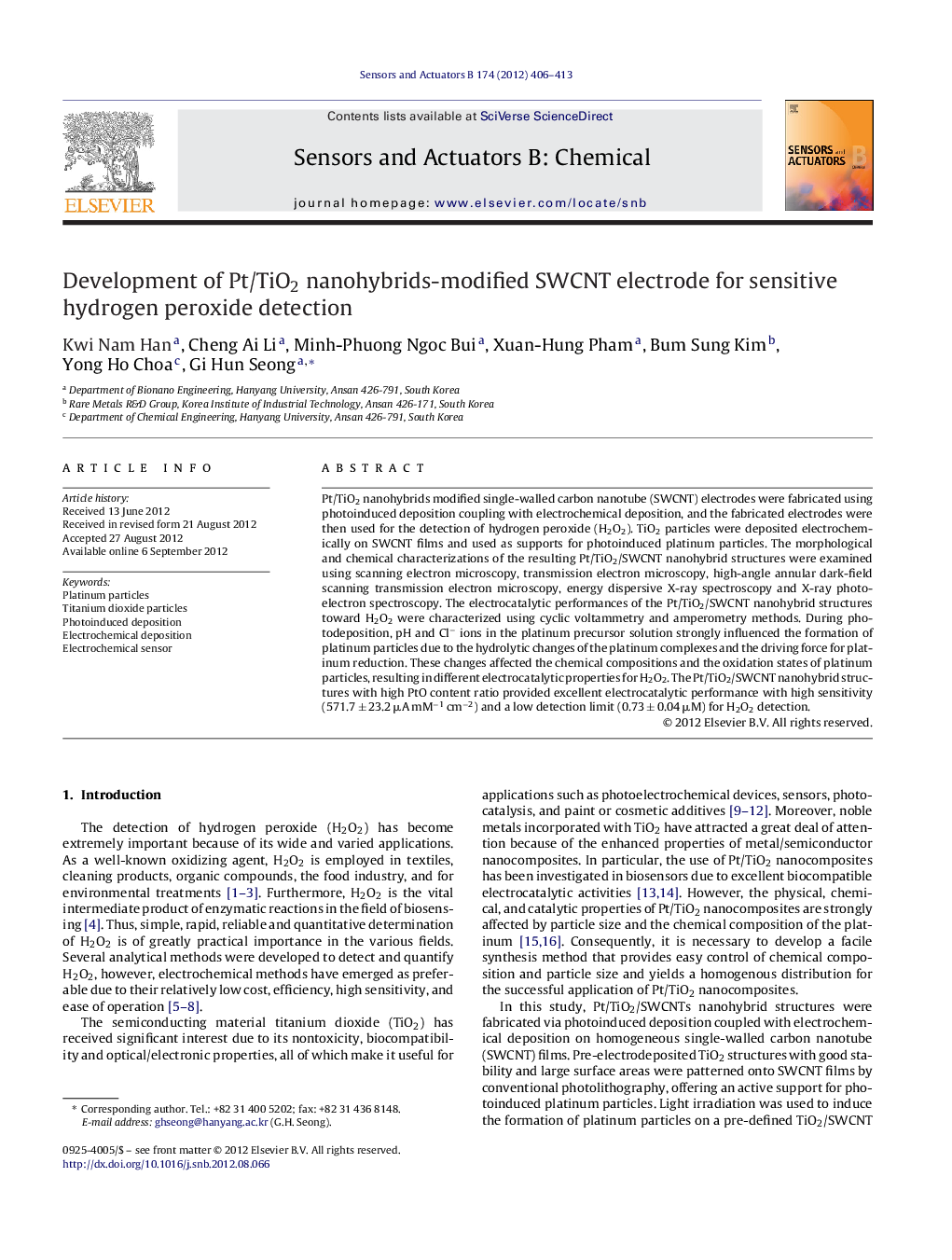| Article ID | Journal | Published Year | Pages | File Type |
|---|---|---|---|---|
| 743345 | Sensors and Actuators B: Chemical | 2012 | 8 Pages |
Pt/TiO2 nanohybrids modified single-walled carbon nanotube (SWCNT) electrodes were fabricated using photoinduced deposition coupling with electrochemical deposition, and the fabricated electrodes were then used for the detection of hydrogen peroxide (H2O2). TiO2 particles were deposited electrochemically on SWCNT films and used as supports for photoinduced platinum particles. The morphological and chemical characterizations of the resulting Pt/TiO2/SWCNT nanohybrid structures were examined using scanning electron microscopy, transmission electron microscopy, high-angle annular dark-field scanning transmission electron microscopy, energy dispersive X-ray spectroscopy and X-ray photoelectron spectroscopy. The electrocatalytic performances of the Pt/TiO2/SWCNT nanohybrid structures toward H2O2 were characterized using cyclic voltammetry and amperometry methods. During photodeposition, pH and Cl− ions in the platinum precursor solution strongly influenced the formation of platinum particles due to the hydrolytic changes of the platinum complexes and the driving force for platinum reduction. These changes affected the chemical compositions and the oxidation states of platinum particles, resulting in different electrocatalytic properties for H2O2. The Pt/TiO2/SWCNT nanohybrid structures with high PtO content ratio provided excellent electrocatalytic performance with high sensitivity (571.7 ± 23.2 μA mM−1 cm−2) and a low detection limit (0.73 ± 0.04 μM) for H2O2 detection.
